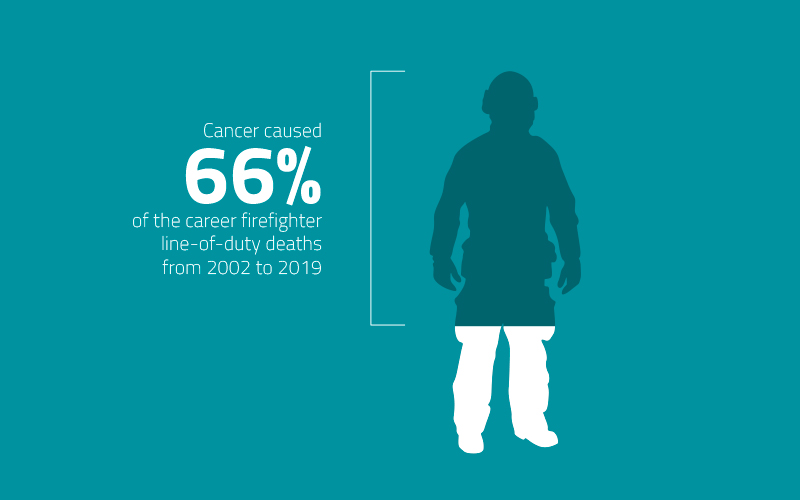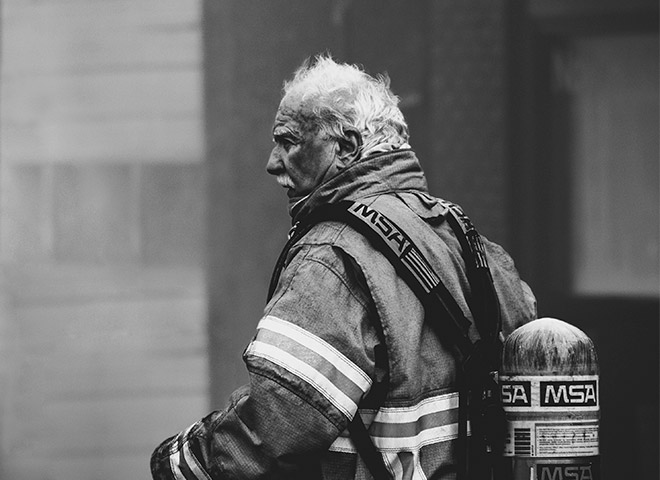
Lieutenant Rudy Iturrino, age 46 and proud father of a 4-year-old son, has been diagnosed with neuroendocrine carcinoma. It started out in the pancreas but later spread to his lungs and diaphragm. Among other things, he has been a live fire training instructor for over a year and a half. Apart from himself, several of his coworkers have also been diagnosed with some sort of cancer. Some of the difficulties he and many others have endured are insurance coverage and denial of treatment. Today he tries to spend as much quality time with his family and in particular his son as possible.¹
This is just one cancer related story of many from the fire service but what do we actually know about cancer in the firefighting community.
Occupational Cancer
Occupational Cancer is the number one cause of Line of Duty Deaths among firefighters. As recently as 2019, 66% of firefighter Line of Duty Deaths were due to cancer. Unfortunately, that number continues to rise. According to the International Association of Firefighters, almost 75% of the firefighters added to the IAFF Fallen Fire Fighter Memorial in 2022 were due to occupational cancer. For reference that’s 348 out of the 469 names added to the memorial.²
Cancer in the Volunteer Fire Service
While the number above is extremely disturbing, it’s important to recognize those numbers are only career firefighters in the United States and Canada. That is not counting the millions of other firefighters around the world or the nearly 700,00 volunteers in the United States and Canada. Currently, there’s very little data that paints the full picture of cancer in the volunteer fire service. Several studies are currently underway and it’s safe to say that the numbers are just high or possibly even higher. To make matters worse, volunteers are less likely to report cancer as occupational due to their volunteer designation. This makes it extremely difficult to determine the real number.
Known Cause
While we cannot quantify exactly how much exposure will equate to a cancer diagnosis, we do know every opportunity should be taken to limit your exposure to products of combustion. Smoke and soot are full of PAHs and other toxic compounds that are known to cause cancer. Recent studies have shown that poor sleep quality and unhealthy diets can lead to an increased risk of cancer. However, exposure to carcinogenic materials remains the highest threat to the fire service.
Cancer Awareness
The Fire service has come a long way in a short number of years. It wasn’t that long ago firefighters had the mindset that cancer wouldn’t happen to them, or that it was a condition of the Job. This is no longer the case. Recently Deputy Chief Radcliffe McKenzie, Central Pierce Fire & Rescue said, “No one said we have to accept cancer as a condition of the job, every opportunity we can take we need to take action to limit our exposures to cancer-causing materials”. Firefighters recognize that cancer is killing their brothers and sisters and actions must be taken immediately to mitigate this alarming trend. Firefighters have even taken it upon themselves to lead the research being conducted to help understand why cancer rates are so high and how we can lower the numbers.





